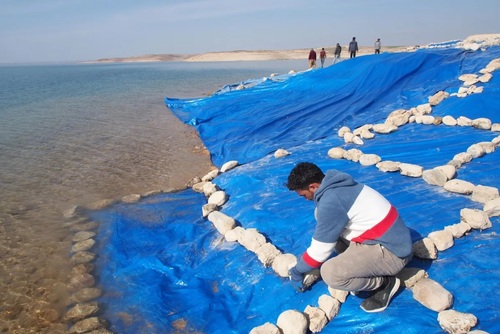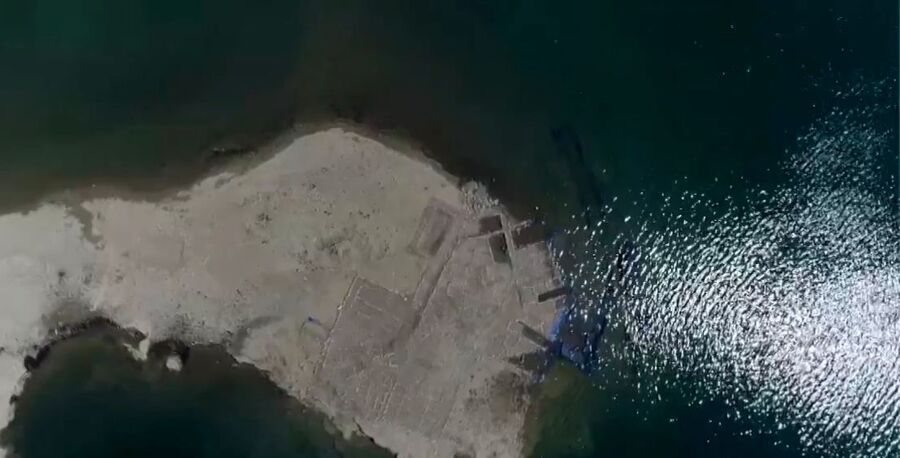The discovery of Zakhiko in the Kurdistan Region
Kurdistan possesses history, culture, and civilization, and tens and hundreds of historical monuments are discovered every day in this region.
The Duhok Archeological Directorate in collaboration with the University of Tubingen, Germany has discovered a historical ancient city on the banks of Tigris River.
Due to the drop in the water level of the Tigris River in the Semel district of Duhok Province, a historical underwater city has emerged dating back to nearly 3400 years ago.
"Bekas Brifkani", the director of historical monuments in Duhok, said: "It is likely that the city found is the same city mentioned in the Babylonian texts and is called Zakhiko and apart from a large wall there is a palace, and many buildings with many rooms in this city; several inscriptions in cuneiform have also been found in this historical city."

The history of the creation of Zakhiko
The history of this city goes back to 1378 BC and coincides with the reign of King Tushrattor or Dashratha who took power in 1390 BC. Under the reign of the king, the boundaries of the rule of Mitani became widespread and reached the borders of Egypt, establishing a strong political and economic relationship with Egyptian civilization at the time in a way that they established relationships based on marriage. King Tushrattor's sister married Amoun IX and his daughter married Akhnatoun.
At that time, the relationship between the Mitani empire and the Hittites was relatively good, creating a peaceful environment without wars. Therefore, the Mitani could build such cities to rebuild and improve their country.
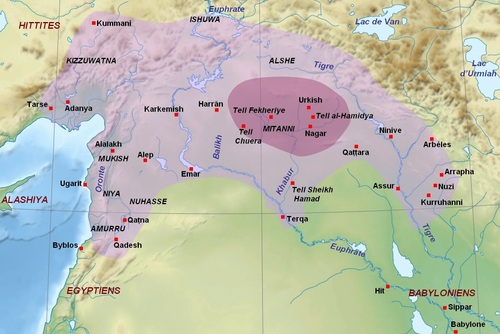
The Mitani Empire was a Kurdish empire that ruled all the lands of northern Mesopotamia from 1600 BC to 1260 BC and the country between two rivers of Tigris and Euphrates to the west and south and a part of the north of Kurdistan. In 1260 BC the Hittite Empire on the north and the Assyrian Empire on the south attacked the Mitani Empire and collapsed it and later they divided its land between themselves.
The historians believe that the Mitani, the Gutti, and Lolo can be considered as the ancestors of the Medes.
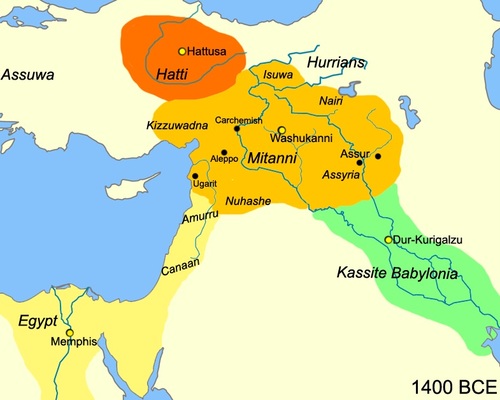
The most important archeological artifacts and monuments found in Zakhiko City:
1. Jar
2. Old walls
3. Pieces of stone that have been carved
4. Skeleton
5. Cuneiform inscriptions
6. A palace

Excavations and investigations in the historical city of Zakhiko
Archeologists believe that the city of Zakhiko, one of the main cities of the Mitani civilization, was destroyed by an earthquake in 1350 BC. The remains of the city were covered by the water after Mosul dam was built in 1980. Therefore, archeologists who participated in the excavations in 2022 regard the destruction of these monuments especially the cuneiform inscriptions, and their preservation underwater for 40 years as a miracle.
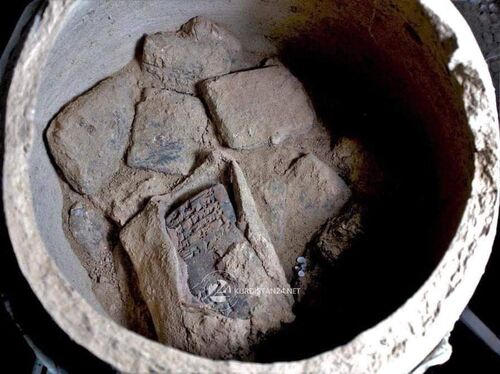
In 2018, after Tigris water dropped back for the first time, Zakhiko Palace was found. For the second time after the water of this river fell back even further in 2022, a larger team participated in the excavations and they could continue their investigations before the city submerged again showing the city's general plan, streets, alleys, buildings, and the walls surrounding the palace. The team was able to clear out 8 rooms of the palace out of its 10 rooms. They also found rock-covering lids made of red and blue bricks and painted walls.

Dr. Ivana Polchis, archeologist and Freiburg University professor who participated in these investigations assumes: "This historical monument found in this site and a large number of historical artifacts in it prove that this was an important city. Obviously, these items and artifacts found here had been brought from all around the region to be collected here."

Before this historical monument went underwater again, the research team covered the site with sand and plastic coverings to prevent its destruction. They hoped that in an uncertain future when the Tigris water level drops again, they would be able to resume their excavations and investigations.
